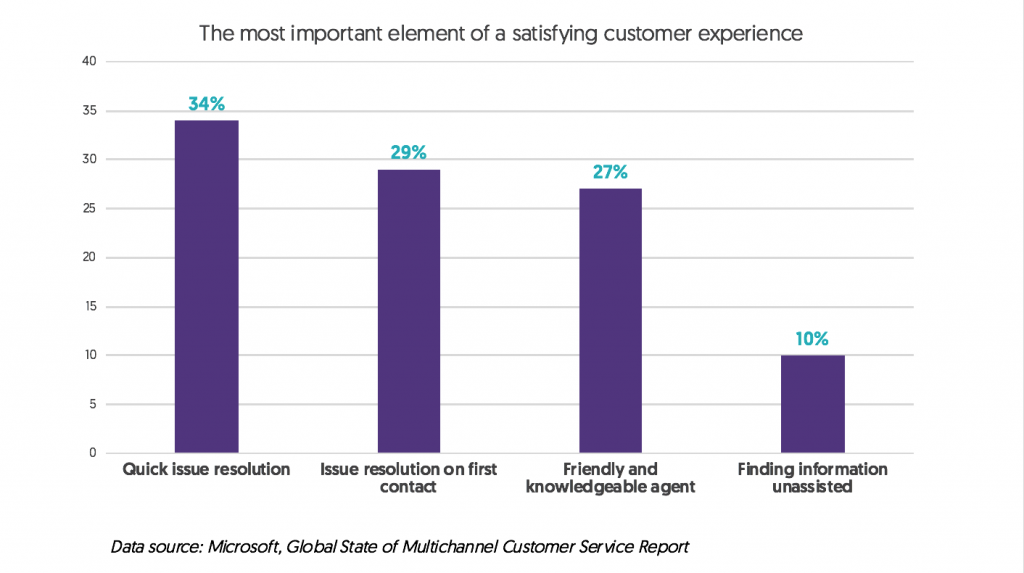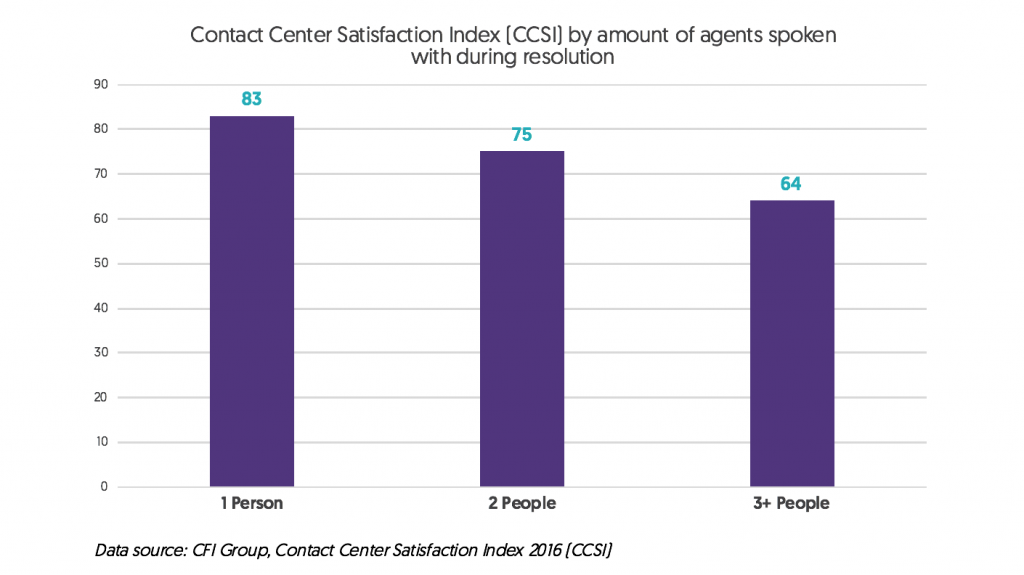
-
03 Jan
-
Top 5 Contact Center Trends
Recent trends indicate that customer service operations are in worse shape than they’ve been in several years. Overall, contact centers are not satisfying the needs of customers. Main areas for improvement include:
- Resolving issues in a reasonable amount of time.
- Providing omni-channel service among the most used channels.
- Decreasing wait times to speak with an agent.
- Getting better at first call resolution and eliminating call transferring.
- Moving to a cloud contact center to meet customer expectations.
Creating a more connected customer experience starts with understanding how people are contacting customer service today.
People are busy – they’re generally multitasking, often using multiple screens for a myriad of tasks. For instance, while they wait on hold, they might be online looking at their account or trying to resolve the issue simultaneously through another medium.
Overall, connecting with people in the right way across any device means executing omni- channel customer service.
5. The most impactful element of a good CX is resolving issues quickly
Research conducted in 2016 by CFI Group reveals that customers care most about getting their questions resolved promptly when thinking about what makes a great experience.
63% of people say that “quick issue resolution” or “issue resolution on first contact” is the most important element of a good experience.

All these elements really work together, though. An element of quickly fixing a problem is doing so on the first contact. It requires friendliness and knowledge of products and services. Being able to use self-service to help oneself helps speed up resolution.
While there’s no magic bullet for quickly fixing people’s problems, there are a few things you can take away:
- If there’s anything customers dislike, it’s waiting – waiting on hold, waiting a long time for an answer, waiting to be transferred.
- Quick issue resolution will take care of itself when you focus on FCR, maintaining a strong knowledge base, and providing self-service methods.
- Don’t spend time on menial tasks while working with customers. Ensure every step gets you one step closer to that eventual resolution.
4. The five most popular customer service channels are phone, email, chat, self-service, and search
Even with all the technological options today, people still prefer authentic human-to-human connections. The majority of customers contact a support center via phone – 79% in fact.
20% prefer email, 19% prefer to use the website to discover information themselves, and 13% prefer web chat. So phone is by far the most dominant. However, what’s also clear is that people increasingly use these other mediums on a regular basis. That means it’s important to leverage omni-channel capabilities in order to engage with customers on their terms.
To remain relevant, companies today need to be prepared with a comprehensive customer experience strategy. The good news is that the right contact center platform gives you control over four of the five most-preferred customer service channels.
What the data above doesn’t reveal, however, is the highest growing medium. Gartner predicts that by 2020, 85% of interactions will take place without the assistance of a live agent. A self-service portal and FAQ will ultimately allow your live agents to focus on more complex and meaningful interactions.
But in the near term, maintaining, training, and preparing channel-agnostic human agents for phone, email, and chat interactions will be well worth your investment.
3. U.S. customers have one of the lowest thresholds for waiting and being transferred
Average time on hold is 56 seconds. While waiting for one minute might not seem all that horrible, remember, that’s just the average. While many customers get through in less time, there are still far too many instances where people are waiting way too long.
Wondering just how long is too long?
Microsoft recently found that 43% of Americans are willing to wait on hold for 1-5 minutes. 39% are willing to wait 5-10 minutes. Any more than that is going to start costing you business as people just hang up.
And once people hang up, most are done. About a third of callers that hang up never call back, according to Voice Response, Inc.
Luckily, there are a few things you can do to combat long wait times:
- Use built-in analytics in order to forecast times when you can anticipate higher volumes of inbound calls. Then, you’ll want to scale up the number of customer service agents in order to accommodate inbound volume. So, when Christmas or Black Friday comes around, you can understand how many agents you need at any given time, and ensure you’re prepared.
- Add background music. AT&T recently found that when people are placed on hold without any background music, they perceive hold time to be roughly 3x longer than what it actually was. (Bonus points for enjoyable tunes!)
- Ensure callers get to the right person the first time. Once customers have navigated your IVR, reward their patience with a friendly and knowledgeable agent on the other end.

Today’s customer is impatient – perhaps more so than ever. Simply put, busy customers don’t have time to wait. Create efficient processes that route calls and resolve issues quickly.
2. 96% of businesses expect growth within their contact centers in the next two years
Today, contact center technology represents approximately a $22B market.
With so much impending growth on the horizon, the challenge is to be able to grow without compromising the customer experience.
The primary reasons driving growth in the contact center market include:
- Keeping up with increasingly complex customer experience demands.
- Replacing outdated technology. Many contact centers continue to deploy legacy technology nearing 8-10 years old. Companies that don’t update their technology will fall behind.
- Finding software vendors that are working in the cloud, thinking beyond solving just the problems of today.
Factors driving this enormous growth include the technology or IT resources being allocated; the investment into people, processes, and training; headcount; or even physical space dedicated to customer service.
1. Cloud will increase threefold by 2021
Contact centers first became a core business function in the 1960s. But back then, the majority were implemented directly on a client’s physical premises. The problem today is that many companies still rely on old legacy deployments built on technology of the past.
Fortunately, the majority – more than 6 in 10 companies – rely on some variation of a cloud contact center. That means 4/10 do not. However, that’s about to change.
The cloud contact center industry is about to take a major jump forward within the next 5 years.
According to research just released from MarketsandMarkets, the cloud contact center industry is projected to increase nearly threefold – from $5.43B to $15.67B (Currently around $10B) – between now and 2021.
Why?
More and more, companies are realizing the value of moving to a cloud contact center. This includes global scalability, increased data security, and overall boosts in efficiency.
Gartner recently predicted that more than $1 trillion in IT spending will be directly or indirectly affected by the shift to cloud during the next five years and said that “cloud computing is one of the most disruptive forces of IT spending since the early days of the digital age.”
It’s less about whether you should move to the cloud, instead a question of when.
Overall, it’s clear that companies have work to do to meet customer expectations. They need to start to optimize for omni-channel, and make the move to the cloud in order to make this possible. In summary:
- People are impatient and want their issues addressed quickly.
- Optimize your customer service for phone, email and chat. Work toward ensuring self-service methods are well equipped.
- Don’t make people wait on hold for an exorbitant amount of time or they’ll hang up.
- The demand for customer service is growing, and accordingly, so are contact centers.
- Legacy equipment and technology is no longer sufficient to address the myriad of customer service requirements of the future – cloud is the answer.
Source by: http://customerthink.com/top-5-contact-center-trends/
- 03 Jan, 2019
- 168Solution Public Class
